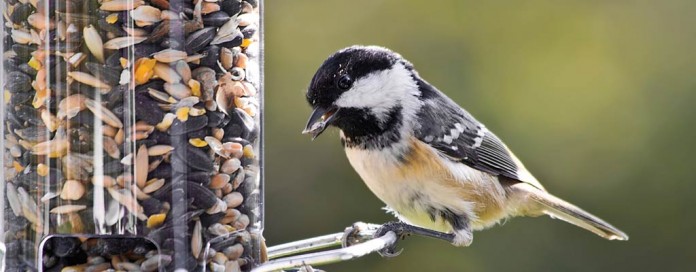If you are among the many who struggle to learn bird songs, start with those species that actually identify themselves; they say their own names.
For this we can thank early ornithologists who named these birds based on their voices. It can be quite difficult to memorize a name and attach it to a complex sound. Learning a song sparrow or house wren by ear is strictly a matter of memorizing a name and a complex sound.
Calling their name
But there are a handful of birds whose names are actually accurate representations of their own voices. These are the onomatopoeic birds, the ones named for the sounds they make.
Killdeer, for example, are common and widespread shorebirds that frequent open fields, golf courses, large lawns, and edges of wetlands.
Some times they scrape a shallow nest on gravel parking lots where they aggressively scold humans or predators that get too close to the nest. Often they use their classic “broken wing” act to lure threats away from the nest. Killdeer loudly proclaim their own name – “Kill-dee! Kill-dee!” It so simple even a child can master it after just a few repetitions. Another onomatopoeic species is the bobwhite.
A small game bird that prefers a mixture of grasslands, shrubby areas, and woods, the bobwhite is the only native quail found in eastern North America. More common in the south, the bobwhite’s signature vocalization is quite clearly, “Bob-white!”
The nocturnal chuck-wills-widow is another bird that’s more common in the south. Found in open woods, chuck’s four-syllable song is quite recognizable – “Chuck-wills-widow!” Chuck’s cousin is the whip-poor-will, whose range reaches into southern Canada. Drive gravel roads after dark this time of year for the best chance to see a whip-poor-will. While resting on the surface of the road, its eerie eye shine gives it away.
Well known for their cryptic coloration, chuck-will’s-widows and whip-poor-wills are heard much more often than seen. I recall a favorite birding spot in northeast Oklahoma where both species occurred.
Mastering their language
Hearing them sing side by side was a great way to master both birds’ voices. Perhaps the most familiar of the name-sayers are the black-capped and Carolina chickadees. These birds can be heard in backyards calling, “Chickadee-dee-dee!” as they visit feeders stocked with black-oil sunflower seed.
Generally speaking, black-caps occur north of a line from Philadelphia to Kansas. And though there is a zone of overlapping ranges, Carolinas stay south of this line. Along the spine of the Appalachian Mountains, black-caps can be found at higher elevations, while Carolinas favor lower elevations. Another onomatopoeic feeder bird is the bold and boisterous blue jay.
They announce their arrival at feeders with a loud, “Jay! Jay!” Other feeder birds flee rather than risk a confrontation. And smaller birds recognize blue jays as nest predators with a taste for both eggs and nestlings. Though not a feeder bird, eastern phoebes often build their nests on top of overhead porch lights. During the day the male stays in touch with his mate with repeated raspy “Fee-bee!” calls. Their mud-based nests are usually covered with fresh green mosses and are easy to recognize.
Careful listening
Finally, one of the least conspicuous birds in the deciduous forest is the eastern wood-pewee, a small, dull flycatcher. They perch quietly in the mid canopy on naked twigs and can be difficult to spot until they fly. From these perches, pewees launch feeding flights to catch flying insects. Often they return to the same spot, so after an individual is spotted, focus on its favorite perch.
Each time it returns, you’ll get a good look. On summer mornings as I lie in bed just before dawn, pewees announce when their day begins. From deeper in the woods, comes the pewee’s plaintive song – “pee-a-weee,” followed by a pause, then a down slurred “pee-urr.”
The first phrase slurs upward and ends on a high note. Sometimes pewees sing the first phrase several times before repeating the down-slurred second phrase.
Next time you hear a puzzling bird vocalization, listen carefully. It may be trying to tell you exactly who it is.













